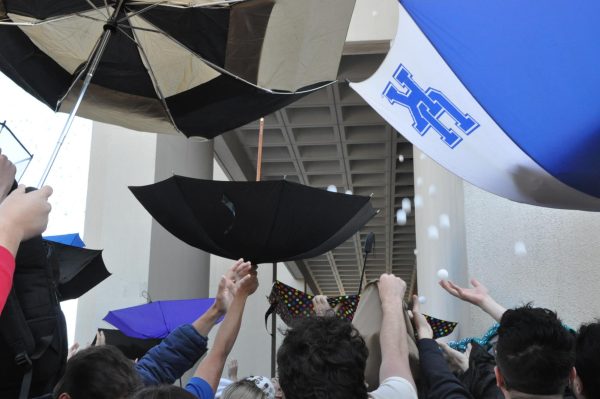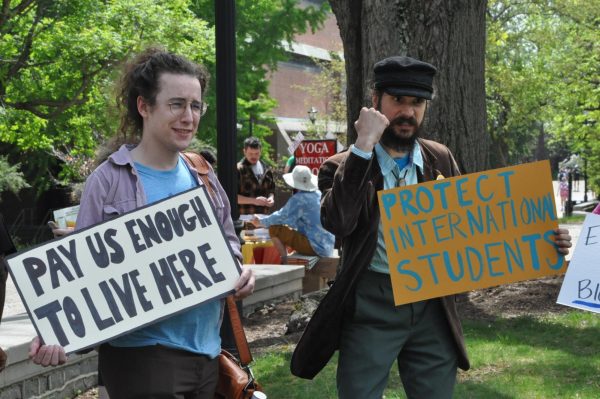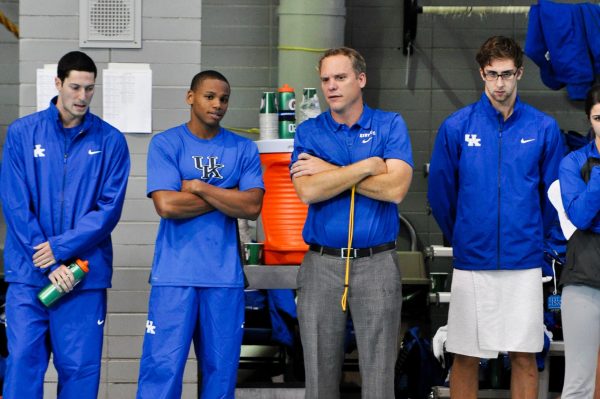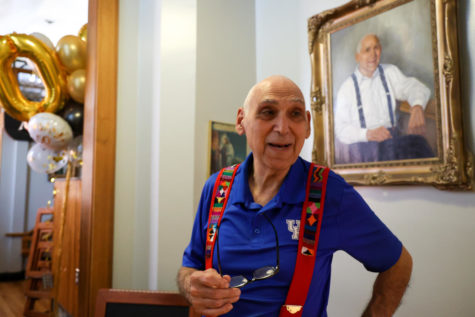Editorial: Missouri students show hope for generation
November 11, 2015
Like any young adult leaving for college, black students join the University of Missouri campus eagerly awaiting freedom from their parents and refuge from their old lives.
But for years, instead of freedom, they were discriminated against by their fellow students with jeers and stereotypically-themed parties, and overlooked by their administration — until Monday when they banded together to unseat the president of the university and brought racism on their campus into the national spotlight.
Students protested against the lack of attention given to racist incidents on campus this year, including when the undergraduate student body president was called a racial slur and a swastika was drawn with feces on a wall in Gateway Hall dormitory.
Missouri is already in the racially tense South, and has been in the spotlight for racial discrimination and abuse of authority since the shooting of unarmed black teenager Michael Brown sparked the Ferguson riots in 2014.
Concerned Student 1950, named after the year the first black students were admitted to the university, is the student group forged through the indifference of the administration. The group’s goal is to bring attention to the neglected racial incidents.
In October they protested during the MU Homecoming parade, blocking then University System President Tim Wolfe’s car.
The student group had reached out to the administration on social media and email to no avail, they turned to public protests, which caught the attention of graduate student Jonathan Butler.
Following a meeting between President Wolfe and Concerned Student 1950 — in which Wolfe denied awareness of “systemic racism, sexism, and patriarchy on campus,” — Butler gained attention around campus when he began a hunger strike that would end with the resignation of President Wolfe.
“For me personally it just goes to show what it takes to make significant administrative changes,” said MU journalism student and Columbia Missourian reporter Elise Schmelzer. “These kind of things like the diversity training and more diverse faculty and staff — the demands that the student group had — have been in the conversation at Missou since I’ve been here (in 2012), and I know it’s been much longer than that.”
From there, demonstrations arose on campus culminating in the refusal of the MU Football team to play until Wolfe resigned for his inaction, a resistance that would have cost the university $1 million.
Members of the football team acknowledged Butler’s hunger strike and Concerned Student 1950 as part of their motivation in boycotting, an acknowledgement that united much of the campus in a fight for racial equality.
When Wolfe resigned on Nov. 9 the campus — faculty, students and staff alike — rejoiced at the beginning of a movement for inclusion and diversity on the racially tumultuous campus.
Their impact has inspired movements on other campuses, like Yale University, whose president apologized to marginalized students for the university’s failure to make them feel safe on campus.
Missouri has only begun its battle against systemic racism, and the situation will likely remain turbulent for some time, as seen in the death threats to protesters on social media, and the campus-wide alert system acknowledging the threats with increased security and an investigation.
“Our generation I think there’s this apathetic, very glued to our phones, only caring about ourselves (attitude), but those students were the opposite of that,” Schmelzer said. “They were putting their studies and their lives on the line to make a societal change. They’re only going to be on this campus for so much longer, but it’s for the future students that they made that change.”
What these students have done reaches far beyond the impacts they have made on the campuses for themselves. Their protests echo the same demonstrations against atrocities pointed out in the civil rights movement 50 years ago.






















































































































































